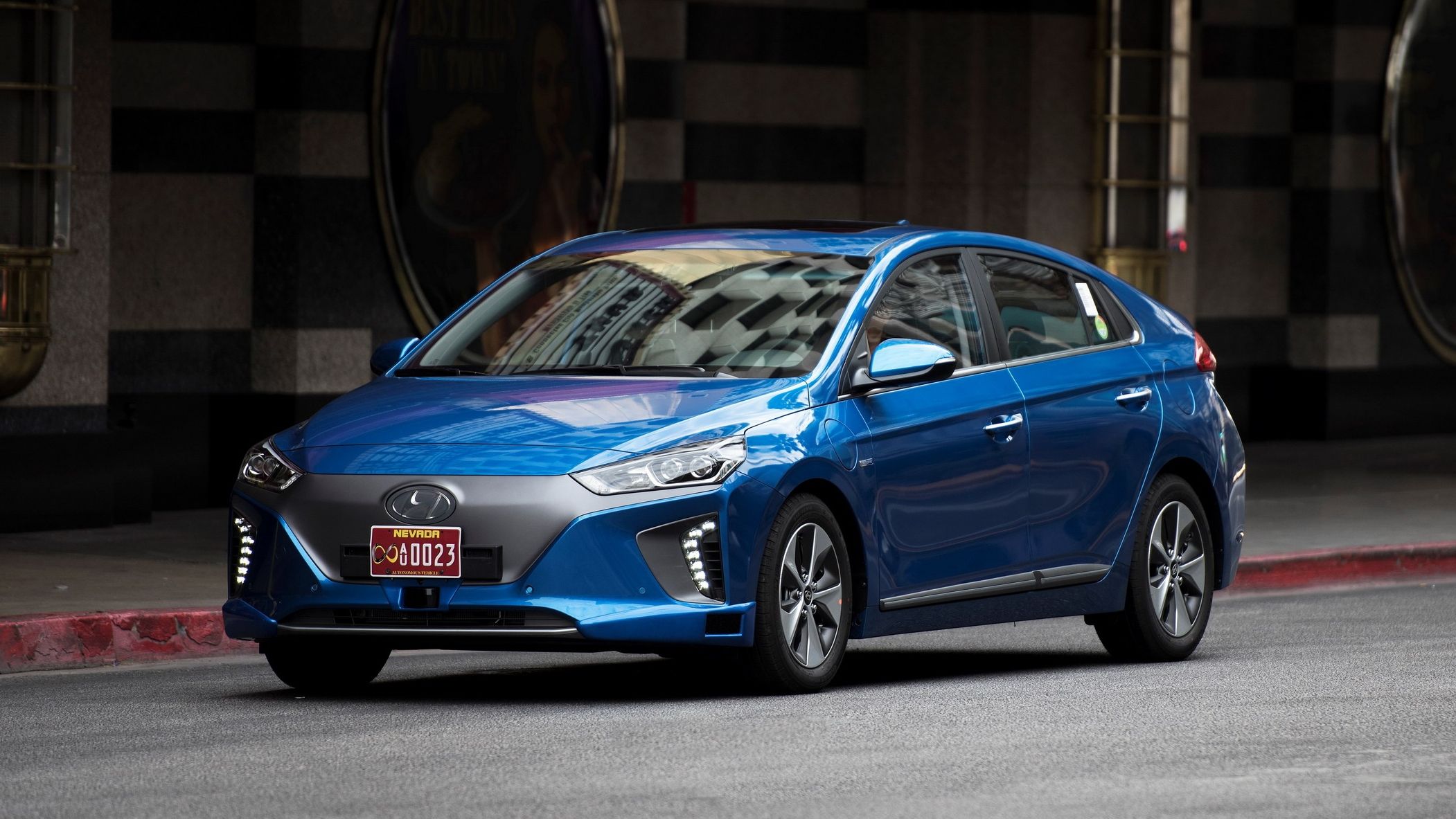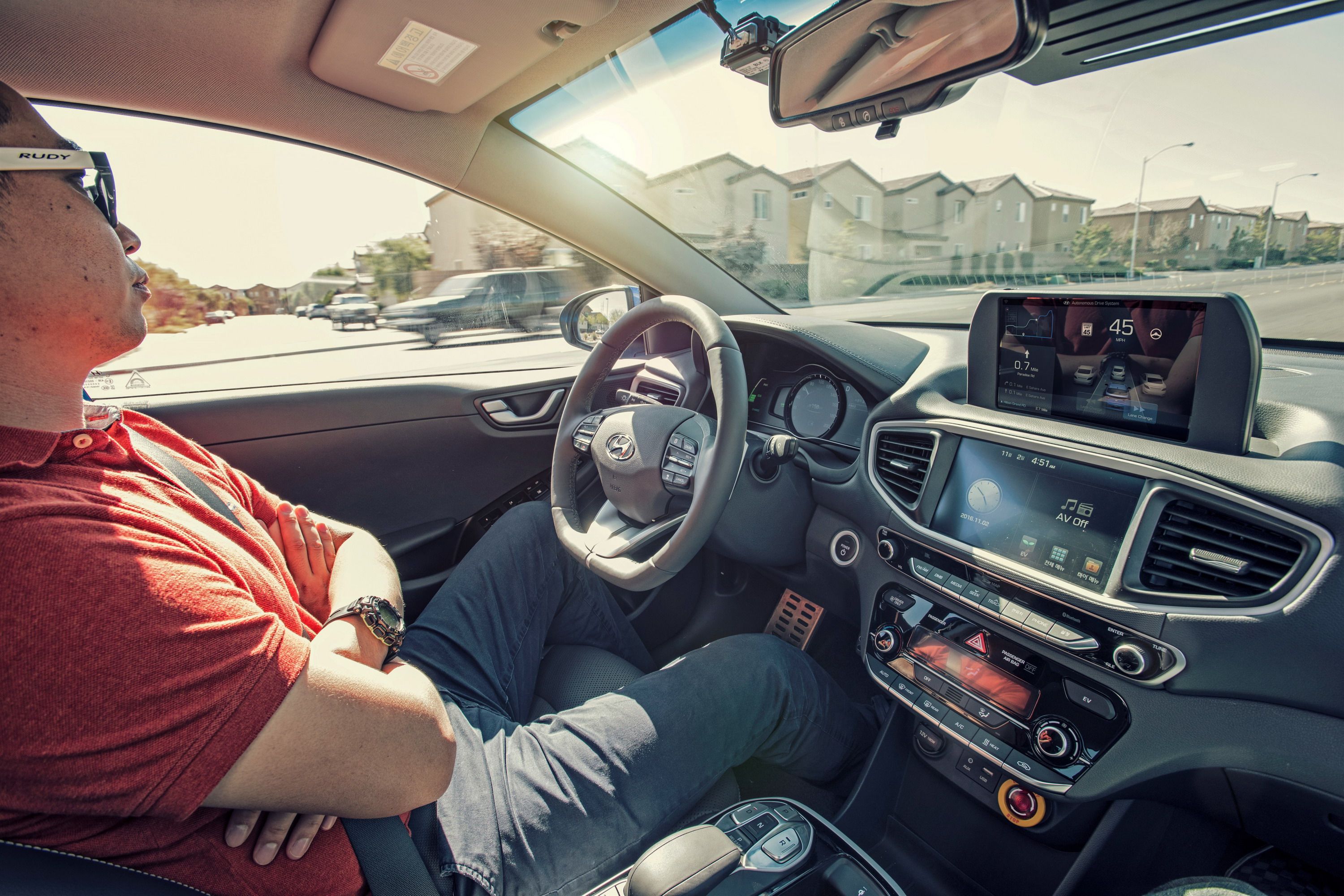The Hyundai Ioniq first made its debut in Hyundai’s home country of South Korea but in January of 2016 as a hybrid. Since then, it has spawned two other versions – an all-electric model and a plug-in hybrid model that doubled a 1.6-liter four-banger with a 45 kW electric motor. As the 2016 L.A. Auto Show kicked off, Hyundai grew its Ioniq lineup yet again with the introduction of Autonomous Ioniq Concept. OF course, as the Concept name implies, it’s not a real production model the Ioniq triplets that we’re already familiar with, but it is a firm representation of what the model will be when level 5 autonomy is perfected and legal for use on public roads. The biggest news about this concept is that the LIDAR system used to identify the car’s surrounds is stashed away and hidden inside the bumper instead of sitting on the roof. But, there’s more to it than that, so let’s talk a little more about it.
The whole purpose of the concept is to showcase an autonomous system that would be safe and easy to transition to from regular or semi-autonomous vehicles. As such, all autonomous controls have been built into the existing systems that are used on the production models. The system works by the use of a forward facing radar to detect the speed of objects and help with route planning, a three-camera system that picks up lane markings, traffic signals and the proximity of pedestrians, and a GMS antenna that can be used to determine the exact location of the vehicle just about anywhere. It also uses high-def mapping information from MnSoft that keeps the onboard systems apprised of road grade and curvature, lane width, and indication data. Finally, there’s a separate radar from blind spot detection to make sure a basic lane change doesn’t end up in disaster.
The production variants of the Ioniq already offer features found on other models like automatic emergency braking, adaptive cruise control, and lane-departure warning, among other things. So, this concept quite literally showcases what the next evolution of Hyundai’s autonomous future holds.
As you can see, this autonomous concept is pretty similar to its production brethren. On the outside, the only real difference is the insert that effectively covers the front grille – hinting that this baby is also all-electric (shocker there) – and the small square cutout just above the tiny air dam, which is likely where the LIDAR system has been hidden away.
On the inside, there’s also just a tiny bit of change. In fact, the most notable thing is the addition of a new screen on top of the dash. There are quite a few sensors plastered to the top of the windshield on the inside. These are likely part of the camera and GPS systems that are uses. Apparently, Hyundai isn’t capable of integrating these into the front and rear fascias like Tesla has, for example. Of course, it’s just a concept, but this model could easily be shifted into production with just a few minor changes, assuming it actually works as it should and won’t go rogue, killing everything with a heartbeat in its path.
(Insert comparison images of production interior and concept interior here.)
With all of that said, it should be mentioned that Hyundai has also recently received the go-ahead to test its autonomous cars in urban areas. Two new autonomous Ioniqs will debut early next year at the next Consumer Electronics Show and will offer rides to media along the boulevards of Las Vegas. And, if you’re still iffy about the capability of these new cars to handle the pedestrian traffic that floods the Vegas boulevards, Hyundai has that covered too, as it’s been testing two self-driving Ioniqs and two self-driving fuel cell Tucsons at its R&D center in South Korea. Of 11,000 engineers and designers on site, none of them have been run over or killed by a rogue car yet, so things are looking pretty good on that front.
What do you think about Hyundai’s approach to self-driving cars? Is easing them into the public and offering up test rides to media a good way to rid the world of the anxiety associated with giving up the steering wheel? Would you be willing to take a ride in one of these cars early next year as they cruise the boulevard? Let us know your thoughts in the comments section below!
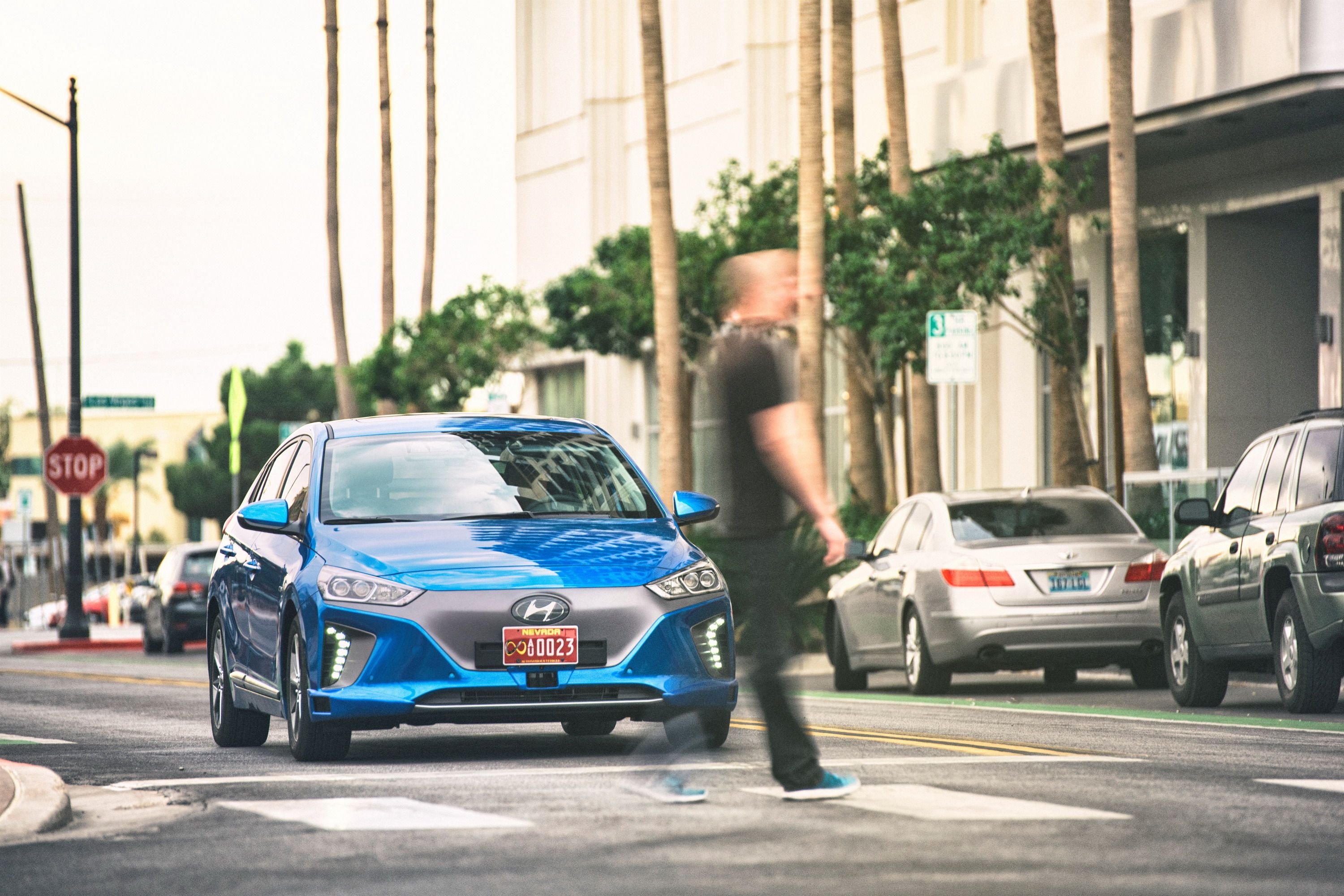
|
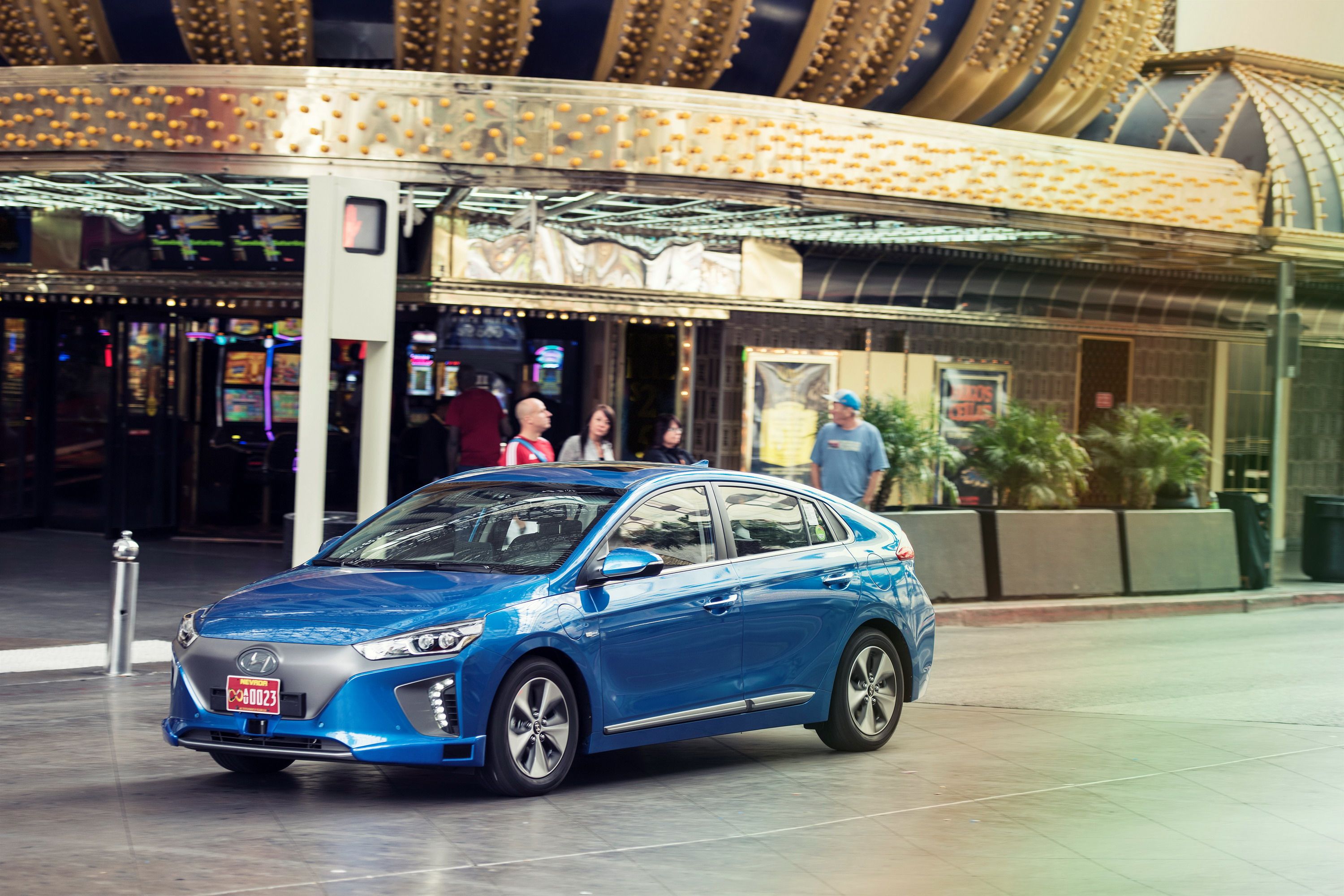
|
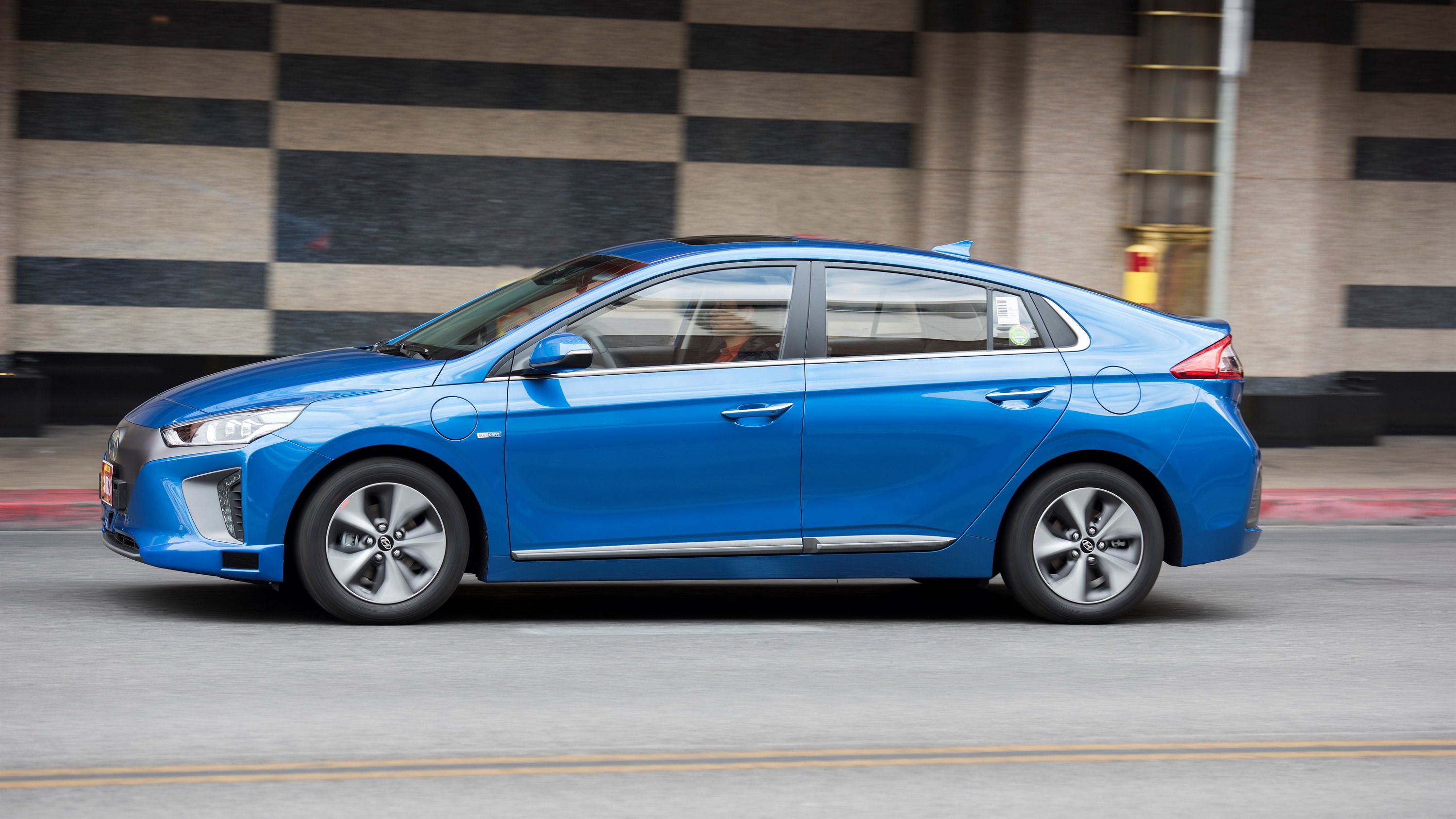
|
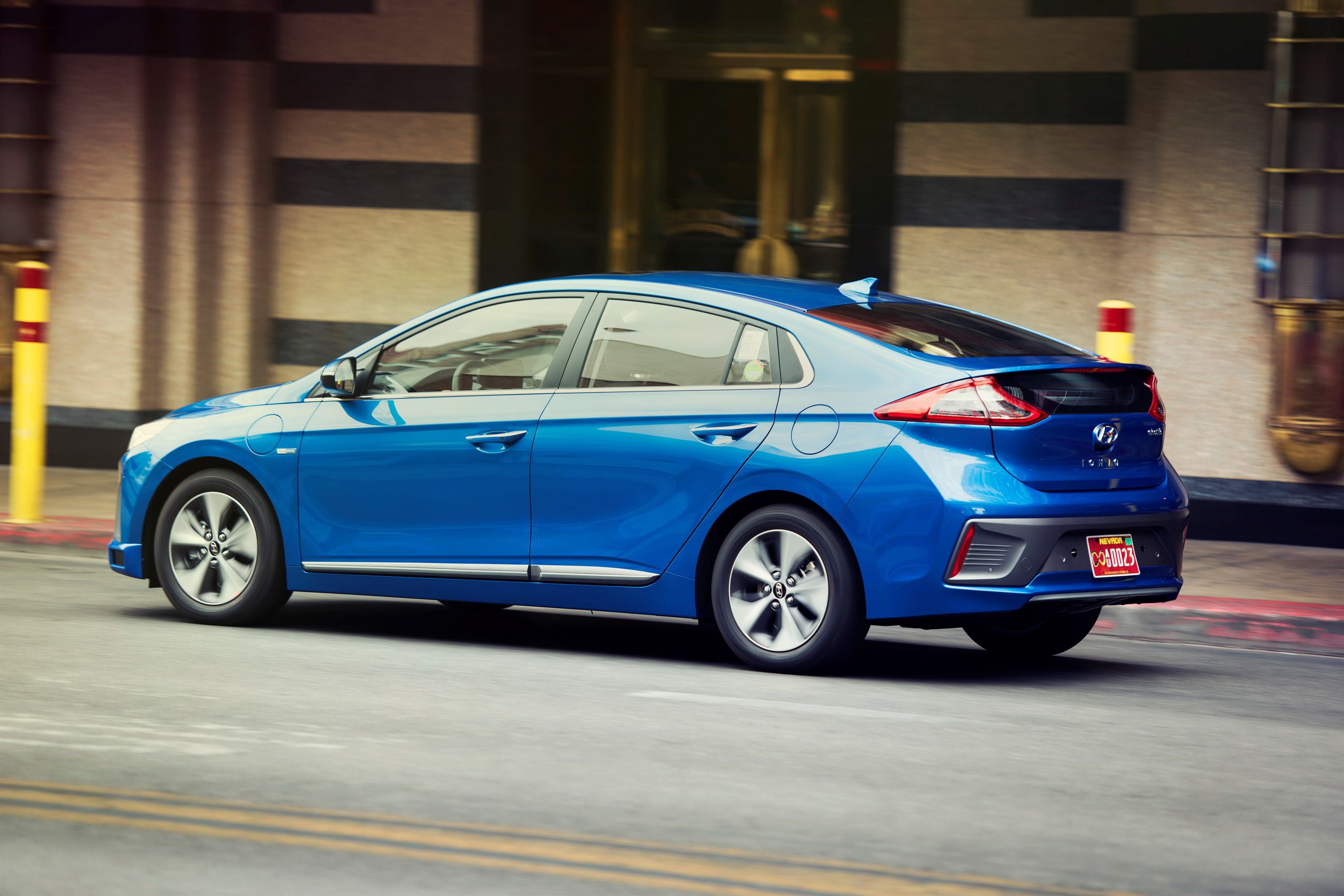
|
|

